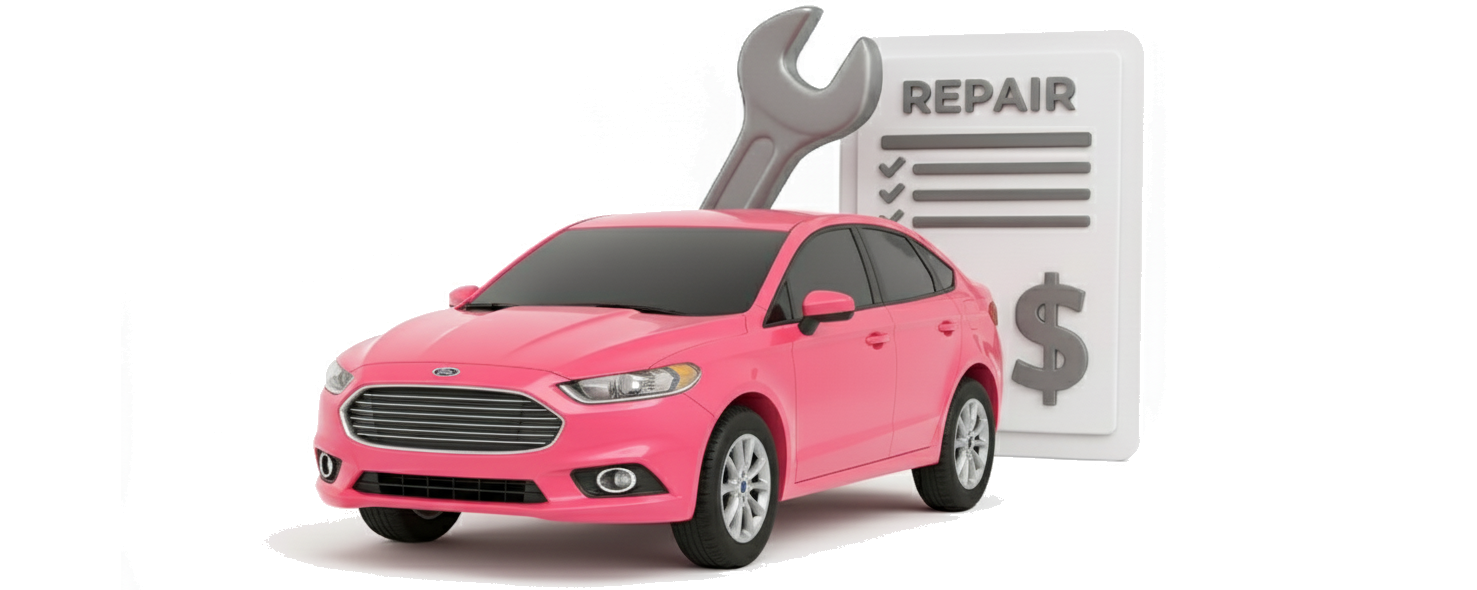Toyotas are popular and reliable cars that you’ll find on roads everywhere. It’s wise to take advantage of others’ experiences to stay on top of potential issues and repairs. The issues that Jerry customers most often face with Toyotas are water-pump leaks, oil level drops between changes, EVAP (Early Fuel Evaporation) faults, ignition-coil misfires and worn wheel bearings. These are usually straightforward, with clear symptoms and predictable costs.
This view reflects what we’re seeing after helping 40,000 drivers across the U.S. manage repairs and maintenance, combined with current shop-quote and repair-price data matched to year, mileage, ZIP, and shop type. If you want local ranges for your car, enter your year/trim and ZIP in the Jerry app.
Real customers Jerry helped
While repair pricing can vary based on different factors like location, parts used, and exact vehicle, Jerry uses real customer experiences to show what drivers are paying right now. Here are a few customer examples
Estimates are modeled based on real vehicle and location data; names have been changed. Actual prices will vary by shop, parts, and vehicle condition.
Model-year & trim cheat sheet (scannable)
Jerry customers can use this to prioritize what to check or ask about. “Severity” reflects how quickly a problem can escalate or affect safety if ignored.
Quick checks for the top issues above (no special tools)
Jerry customers can apply these simple checks to confirm the same problems listed above before paying for diagnostics. Work on a cold engine and stop if anything seems unsafe.
Coolant smell/crust:
Look for pink crust or wet tracks near the pump and timing cover. A reservoir that drops over a week points to a leak—plan to replace the coolant soon.
Oil level drops between changes:
Park level, wait a few minutes, and check the dipstick. Adding about a quart every 1,000–1,500 miles is meaningful consumption worth documenting.
“Tighten fuel cap” message:
The system sees a loose gas cap as a leak, which sets the error message. Putting the cap on correctly solves the problem. However, it may take a few days for the light to go out by itself. If the Check Engine Light stays on after a few days, time for more diagnosis.
Shudder/flash:
Note when it happens—cold start, uphill, or passing. That timing helps a tech target a weak coil or worn plug faster.
Road-speed hum:
At 35–50 mph, a gentle lane weave that changes the hum suggests a wheel bearing on the loaded side; engine-rpm noise usually is not caused by a failing bearing.
Well-kept cars with regular oil changes, timely plugs, and documented coolant service often deserve a modest premium because near-term risk is lower. Trucks from heavy-salt regions warrant very close frame inspections and price adjustments.
Maintenance that reduces risk for these issues
These tasks directly relate to the problems above and help your Toyota age gracefully. Staying on schedule usually keeps total ownership costs modest for Jerry customers.
Engine oil & filter (5,000–7,500 miles):
Use the exact spec and check every 500–1,000 miles if your level drops. If the engine is using oil faster than before, monitor the oil level closely. Low oil levels can result in severe engine damage in a very short time.
Coolant service (first at ~100k/10 years, then ~50k):
Fresh long-life coolant supports water-pump seals and gaskets, reducing leak risk.
Spark plugs (100k–120k):
On-time plugs reduce coil stress, lower misfire risk and protect the catalytic converter.
Brake fluid (~every 3 years):
Clean fluid protects internal brake parts and doesn’t vaporize during hard braking affecting stopping distances.
Fuel/EVAP habits:
Don’t “top off” past the first nozzle click when refueling. Overfilling can saturate the charcoal canister and trigger EVAP faults.
If history is unclear, verify plugs and brake fluid around 60k, consider a transmission drain-and-fill near 90k, and plan coolant service and plugs around 100k–120k. Jerry can flag labor overlaps so you pay for access once.
When to stop driving (to avoid bigger bills)
If you’re unsure whether it’s safe, pull over and call a mechanic or tow; new warning lights, severe new noises or smells, or fluids pouring out are all “stop now” signals. Here are common situations where Jerry drivers are stopping immediately – the right move:
Temperature warning:
Gauge spikes, red temperature light, or “Hybrid system overheated” → shut down and tow. Overheating can quickly lead to head-gasket or inverter damage.
Flashing Check Engine Light:
Power loss plus a flashing Check Engine Light indicate a severe misfire. Continuing can overheat and damage the catalytic converter; go directly to a qualified shop.
Brake warnings:
Very hard pedal on hybrids, or a sinking/spongy pedal on any Toyota → tow. Brakes first; diagnosis can wait until the vehicle is safe.
Oil pressure light:
If it stays on, stop immediately and tow. Running without oil pressure can turn a small issue into a full engine replacement.
If you’re using the Jerry app, you can run a quick triage in Diagnose before you tow and then compare local price ranges for the likely repair.

What our customers are asking
-
My oil level drops between changes—should I use a thicker oil?
-
Can I drive with a small water-pump leak for a while?
-
Will an EVAP code make me fail emissions?
-
How do I avoid overpaying for common Toyota repairs?
-
Do I need OEM parts for coils and water pumps?

Steve Kaleff began working on cars at the very young age of nine years old, when his dad actually let him make fixes on the family car. Fast forward to the beginning of a professional career working at independent repair shops and then transitioning to new car dealerships. His experience was with Mercedes-Benz, where Steve was a technician for ten years, four of those years solving problems that no one could or wanted to fix. He moved up to shop foreman and then service manager for 15 years. There have been tremendous changes in automotive technology since Steve started his professional career, so here’s looking forward to an electric future!

Nick Wilson is an editor, writer, and instructor across various subjects. His past experience includes writing and editorial projects in technical, popular, and academic settings, and he has taught humanities courses to countless students in the college classroom. In his free time, he pursues academic research, works on his own writing projects, and enjoys the ordered chaos of life with his wife and kids.









